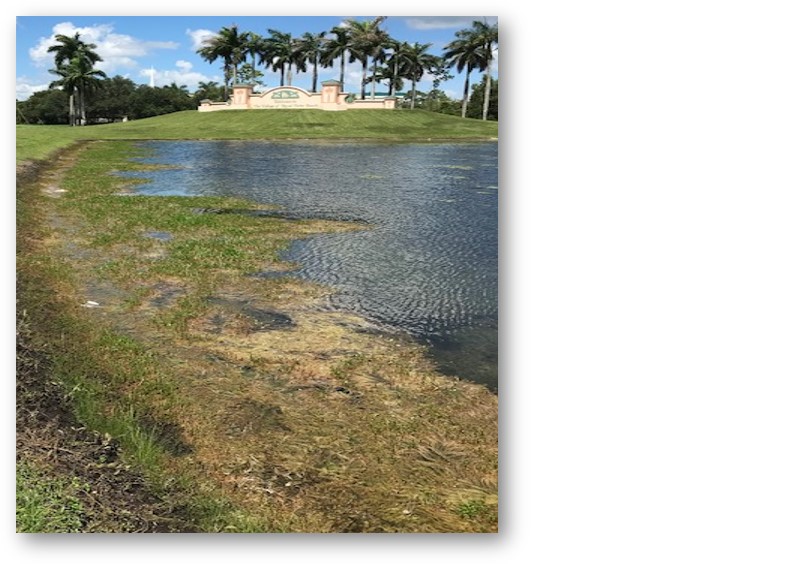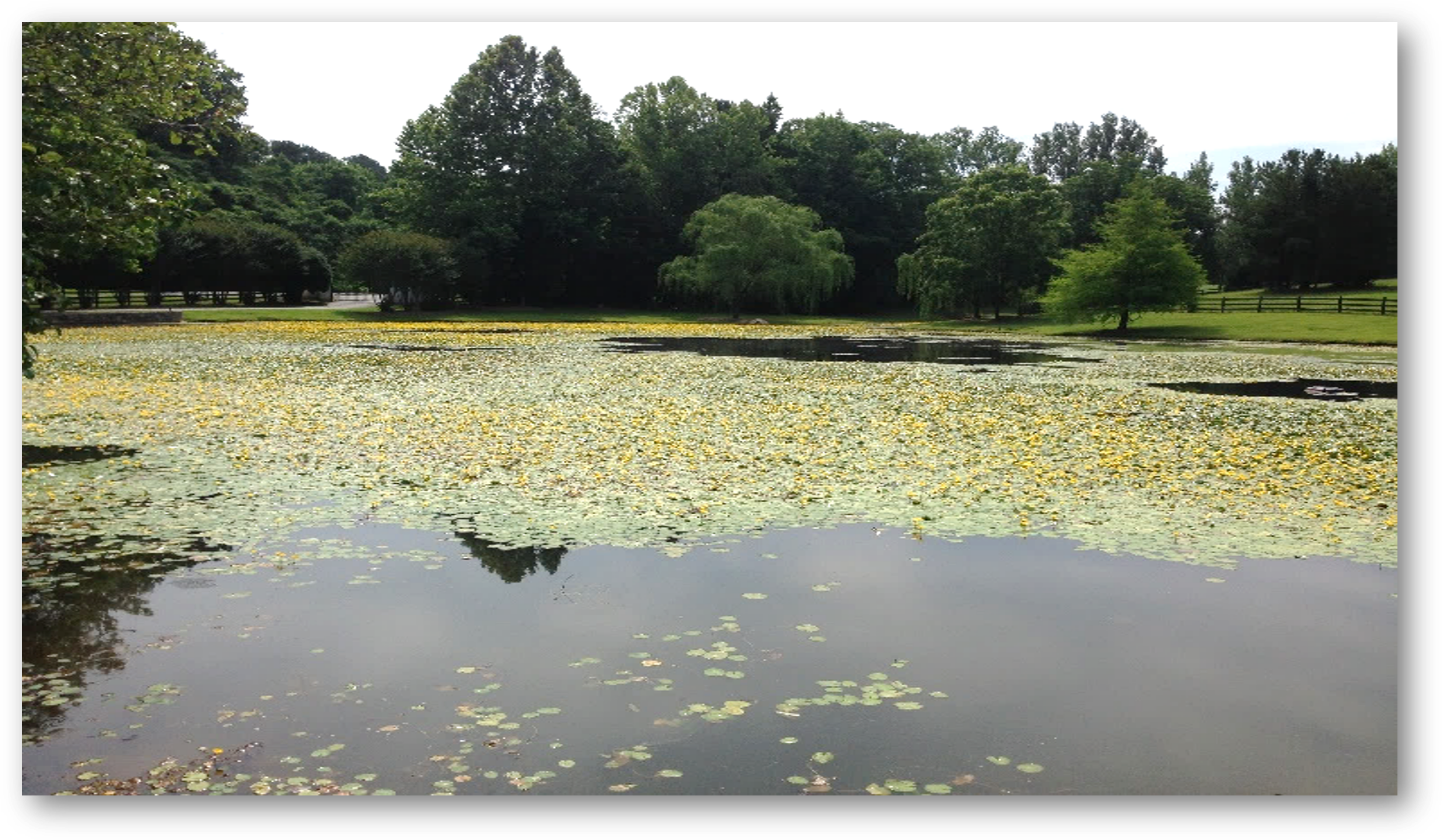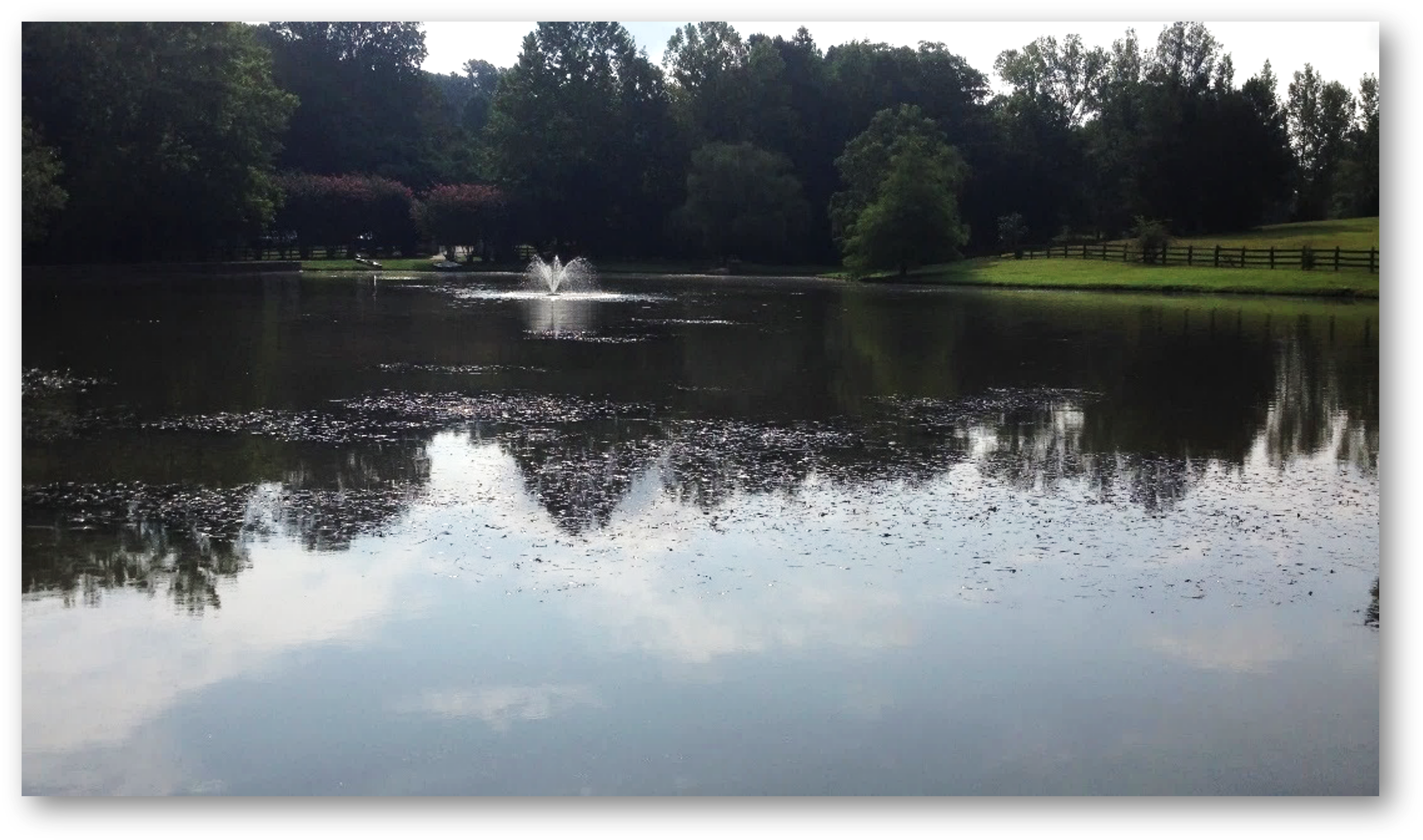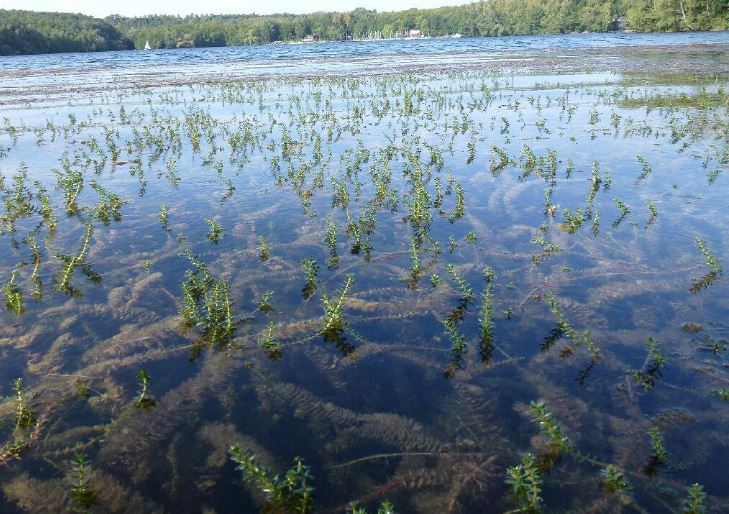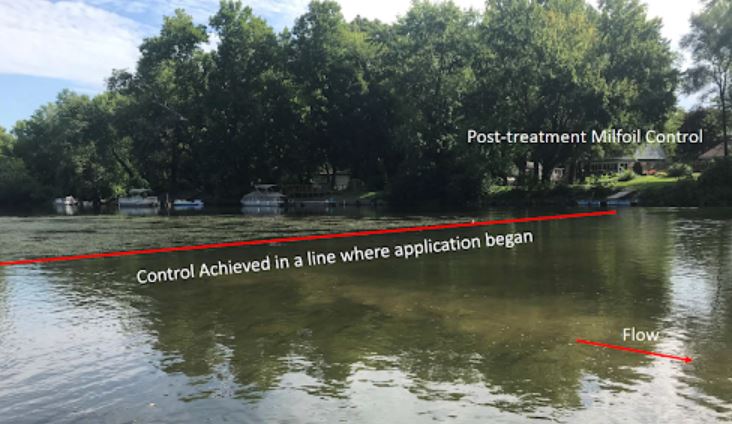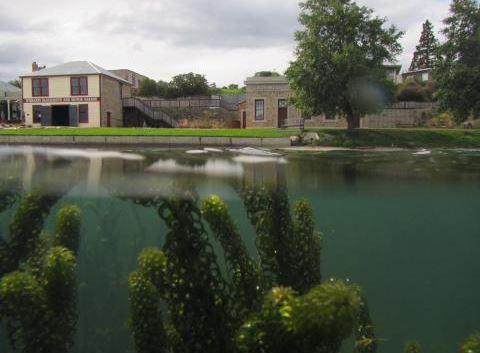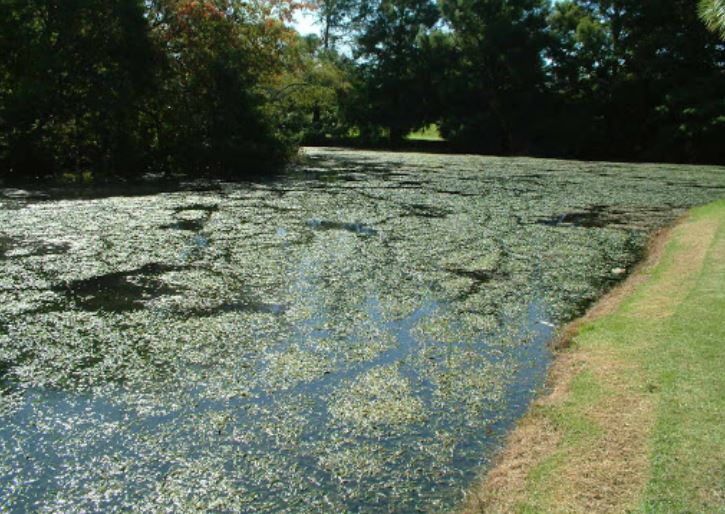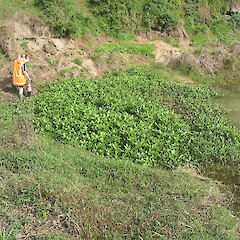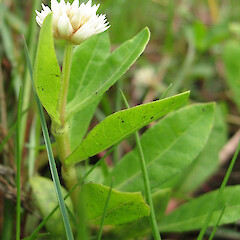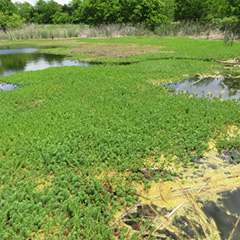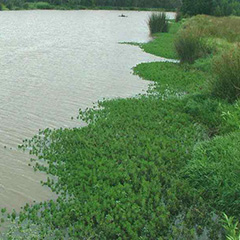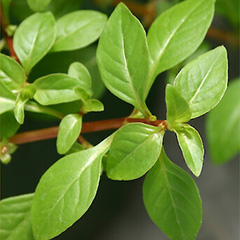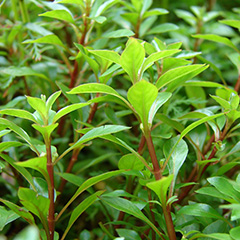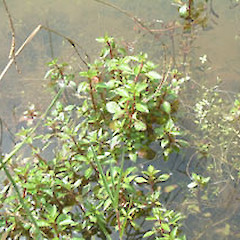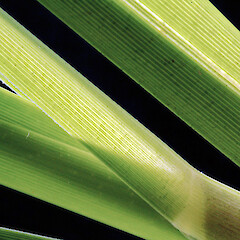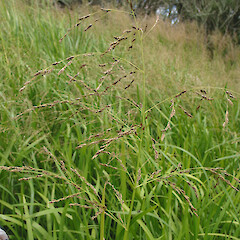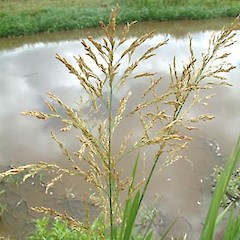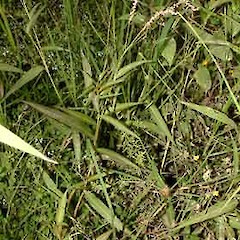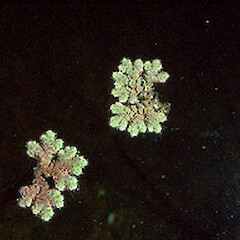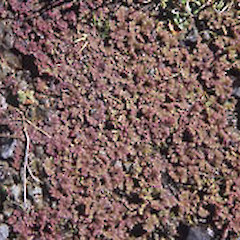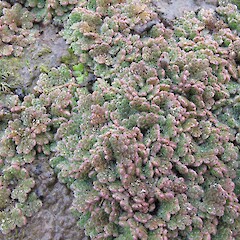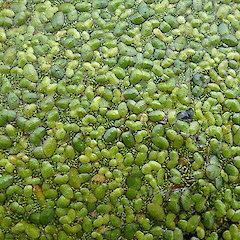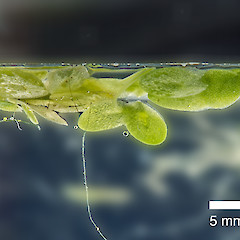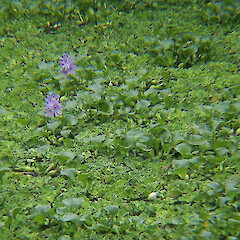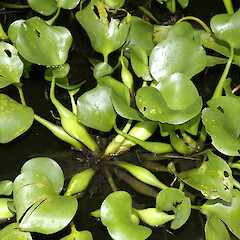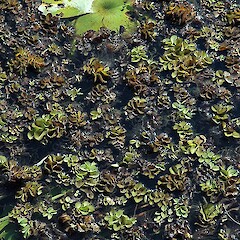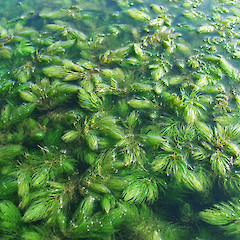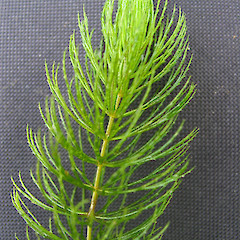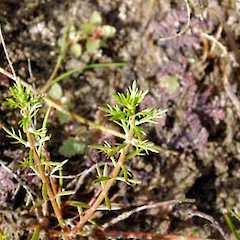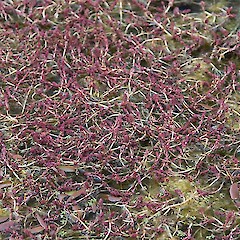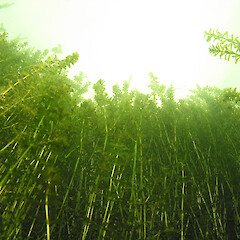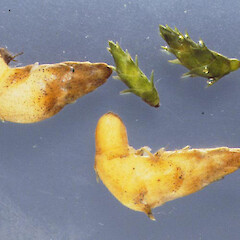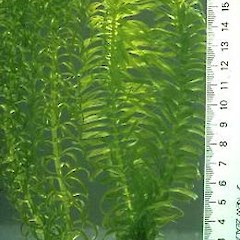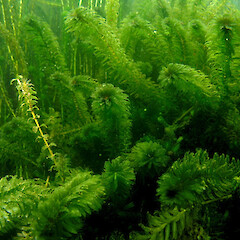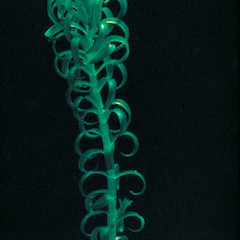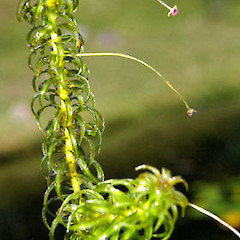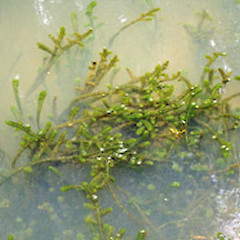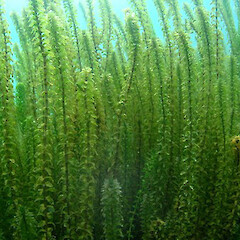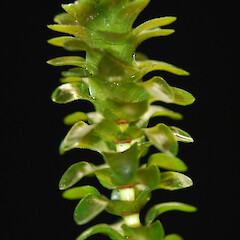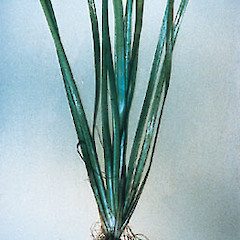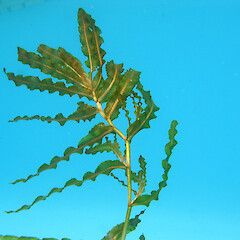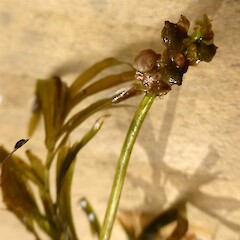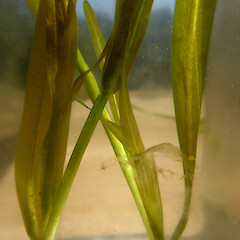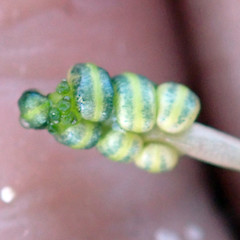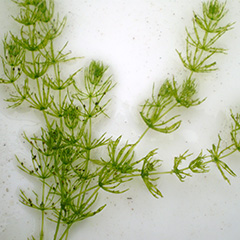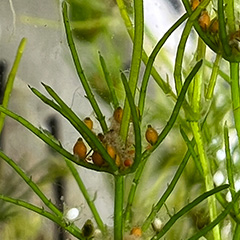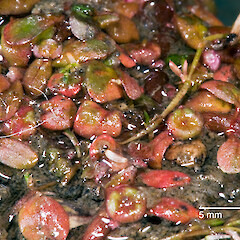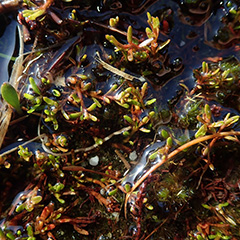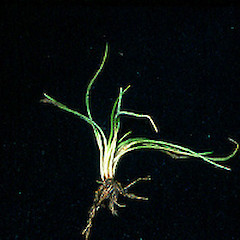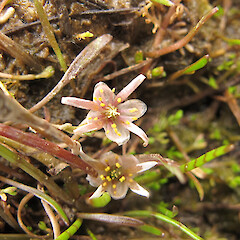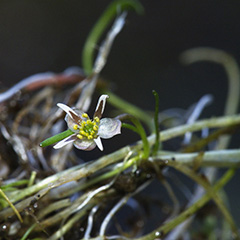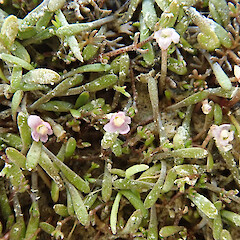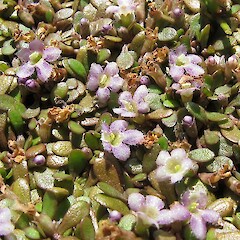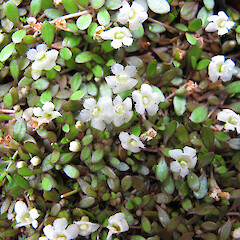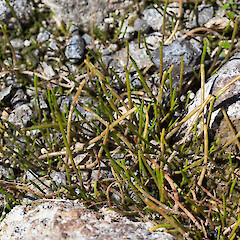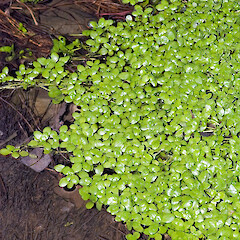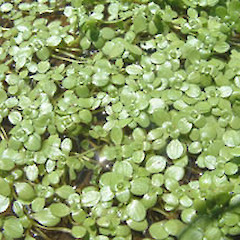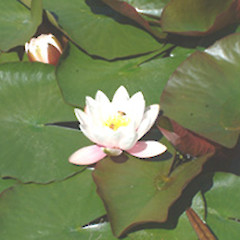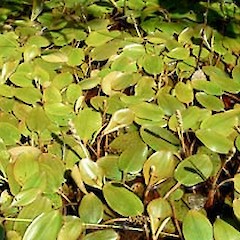Solutions
Aquatic Weed Control
Watch This Space!!!
ProcellaCOR, a new environmentally friendly herbicide product is coming to Australia and NZ soon. This breakthrough technology treats weeds that keep coming back using a new mechanism and a new active herbicide for fast and long-lasting spot treatment.
ProcellaCOR has an active ingredient that provides long-term control for Hydrilla, Milfoil, Alligator Weed, and other tough-to-control aquatic weeds.
If you’re tired of treating and re-treating with limited results, then just watch this space! Finally, you will be able to get on top of these aquatic weeds!!
Fill in your details here if you want to be kept up to date about this exciting new technology!
Check your pond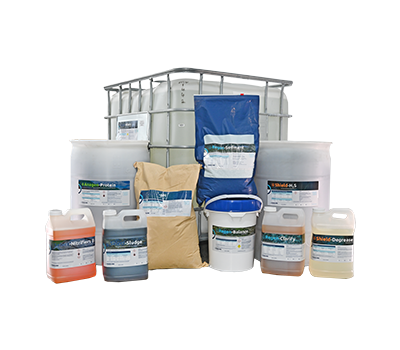
Did you know?
Every water body has at least one nuisance weed that keeps coming back year after year. And that means spraying chemicals to control it year after year.
Not with this new herbicide coming to NZ. This unique formula requires 40x-100x less active ingredient and achieves significantly longer control.
Products
Industry Leading Solutions
for Aquatic Weeds.
Aquatic Weed Types
Aquatic Weed Types
Aquatic plants have different lifeforms and habitats.
What does your plant look like?
Where did you find it?
See the three categories below to identify the species.
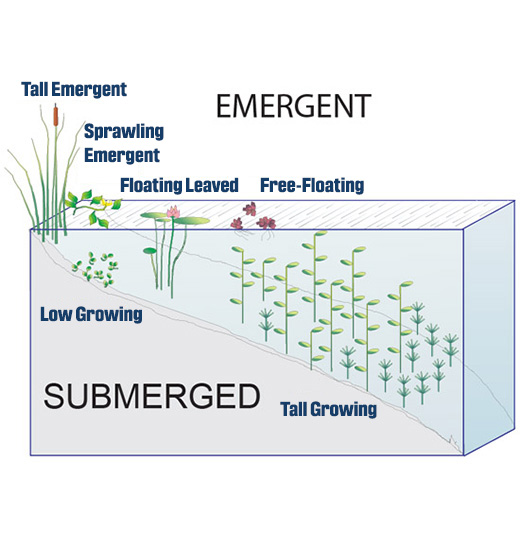
Emergent
Emergent aquatic plants
Family: Amaranthaceae
Alternanthera philoxeroides (Mart) Griseb. (commonly called alligator weed)
Alligator weed is an introduced sprawling, rooted perennial which forms dense mats of vegetation up to 1m tall that can cause serious problems in drainage canals, wetlands, pasture and cropping land. Plants will grow in both fresh and brackish water, in pastures or terrestrial crops, although it will not root in water deeper than 2–3 m. As a marginal weed it can support a floating mat of vegetation over deeper water.
Its current distribution is widespread in Northland and Auckland Regions with scattered sites in Waikato, Bay of Plenty and Manawatu-Wanganui Regions.
Family: Halogoraceae
Myriophyllum aquaticum Cambess (commonly called parrot’s feather)
Parrot’s feather is a robust, rhizomatous perennial with leafy stems that is common in both flowing or standing water and can also grow as a marginal species on damp ground. It can form very dense mats of floating vegetation over water less than 2.5 m deep. This introduced plant may also grow as a submerged plant, with finely dissected leaves similar to the native milfoils.
Propagation and spread is by stem fragmentation and lateral stem growth. It is rapidly spreading in the North Island, and the northern South Island.
Family: Onagraceae
Ludwigia palustris L. (commonly called water purslane)
Ludwigia peploides (Kunth) Raven subsp montevidensis (Sprengel) Raven (Commonly called primrose willow)
These introduced species are erect or prostrate perennials that are common around the edge of small protected lakes, ponds and drains and may develop surface floating growth over deeper water.
Both species of Ludwigia have branched stems with roots at the nodes either attached to soil or hanging in the water. L. palustris has reddish, opposite entire leaves that are acute to acuminate up to 3 cm long and with a winged petiole up to 2.5 cm long. The leaves of L. peploides are alternate and obtuse, and up to 6 cm long. Their upper surfaces are glossy and they taper into petioles that are up to 2.8 cm long with two dark green swollen semi-globular stipules at the base.
L. peploides has conspicuous (2 cm) bright yellow flowers during the summer which arise on stalks from the leaf axils. L palustris has small (3 mm) inconspicuous flowers without petals that are solitary in the leaf axils.
Family: Poaceae
Glyceria maxima (Hartman) Holmb. (commonly called reed sweet grass)
The introduced species, Glyceria maxima, has stout erect leaves, with creeping rhizomes that form large patches. Glyceria is unique amongst grasses in that it frequently has closed sheath. This particular species is distinguished by the panicles that are branched, rather dense and have numerous spikelets.
It is scattered but locally common in the Waikato and Hauraki plains as well as parts of Otago. Found on the margins of lowland lakes, rivers and drains. In particular, glyceria can be a troublesome drainage weed and although palatable it has been implicated in the cyanide poisoning of livestock.
Zizania latifolia (Griseb) Stapf (commonly called Manchurian wild rice)
Zizania is a tall (2–5 m) coarse perennial that has a strong deep root system consisting of bulky spreading rhizomes. It is usually found in the berm of waterways, but also invades swamps and pastureland, and is tolerant of both fresh and brackish water.
It flowers sparsely in November and December and mature seed, if dropped in the water, is carried by tidal action both up and down the river to establish new centres of growth. Zizania also propagates via rhizome extension and fragments that spread by water movement.
Native to Asia, it was introduced into New Zealand around the turn of the century in the ballast carried by timber ships, which was discarded on arrival in New Zealand. Its current distribution extends from Northland to Auckland and along the Wairoa River.
Family: Polygonaceae
Persicaria decipiens (R. BR.) KL Wilson (commonly called swamp willow weed)
P. decipiens is an erect native annual herb up to 0.5 m to 1 m tall, occurring at or above water level on fertile sites along river banks or in marshy areas. It has reddish stems with lance or willow shaped leaves, tapering at either end. The leaves are alternate, simple, and entire with sheathing stipules. The leaves may be 5–12 cm long and up to 5 cm wide, without prominent veins but are sometime reddish and usually have dark blotchy markings. Flower spikes are slender and erect but droop towards the apex, with pink or sometimes white flowers. The fruits are lens shaped, shiny dark brown and comprise an important food source of waterfowl that also spread the seed.
P. decipiens is widespread but tends to be more common in the North Island, found on the margins of pools and slow streams, and in swamps, or muddy ground.
For further information on these plants species see:
B.T. Coffey and J.S. Clayton. (1988). New Zealand Waterplants: A guide to plants found in New Zealand. Ruakura Agriculture Centre, Hamilton.
Free Floating
Free floating species
Family: Azollaceae
Azolla filiculoides Lam.
Azolla filiculoides is a small free-floating fern that forms a conspicuous, bright red surface cover on fertile, ponds, lakes and drains. The plants are 1–2.5 cm long, ovate in outline and have branches comprised of numerous small, alternate and overlapping leaves that may conceal the branching horizontal stem. The leaves may be red or green, but are typically red in full sunlight. The roots are filiform, without branches and grow to 5 cm in length. Propagation is both vegetative and sexual.
Azolla filiculoides is widespread throughout New Zealand and is easily confused with A. pinnata, an introduced species of Azolla that is common throughout the upper North Island. These two species are distinguished by the more open structure of A. pinnata and by its branched feathery roots that form numerous root-hairs.
Family: Lemnaceae
Lemna minor L. (commonly called duckweed)
Duckweed is a small free-floating plant that can cover the surface of wind-protected fertile waters. It is a native species and widespread throughout New Zealand.
L. minor is characterised by its 2 to 4 small platelet leaves (3–4 mm in length) that have a single root each, terminating in a conspicuous root cap. This feature also distinguishes L. minor from Spirodela punctata and introduced duckweed that has two or more roots per platelet.
Family: Pontederiaceae
Eichhornia crassipes (commonly called water hyacinth)
Water hyacinth is a large free-floating stoloniferous perennial that forms thick dense mats of vegetation across the surface of lakes, ponds and waterways. It has bright green glossy leaves, inflated bladder like petioles and thick fleshy stolons that radiate in all directions from a vertical stem. The flowers too are distinctive, bluish-purple in colour and ca. 6cm across on a terminal spike.
Water hyacinth is acknowledged worldwide as a troublesome aquatic weed. It was introduced into New Zealand as an ornamental plant, and spread to a number of sites in the North Island from which it has now been mostly eradicated. It is an illegal plant that is occasionally still found in private ponds.
Family: Salviniaceae
Salvinia molesta Mitchell (commonly called salvinia)
Salvinia is a free-floating fern. The young plants have well spaced, small (1.5 cm long) pale green leaves that lie flat on the surface of the water. Mature leaves are brownish and more crowded, compacted and folded, forming dense mats. Plants are usually up to 30 cm long. Leaves occur in whorls of three with only the upper two forming true leaves above the water surface, whilst the lower leaf which resembles a root hangs down into the water. The upper leaf surface is water repellent and covered in distinct white hairs.
The plants are frost-sensitive, growing best at temperatures over 20°C, however they can survive in protected waters or frequently inundated damp mud. They are found in the North Island, north of the Waikato.
Salvinia can be a serious weed in tropical countries, capable of rapid growth. In New Zealand it is an illegal plant that is occasionally still found in private ponds.
For further information on these plants species see:
B.T. Coffey and J.S. Clayton. (1988). New Zealand Waterplants: A guide to plants found in New Zealand. Ruakura Agriculture Centre, Hamilton.
Submerged
Submerged macrophytes
Tall growing species
Family: Ceratophyllaceae
Ceratophyllum demersum L. (commonly called Hornwort)
Ceratophyllum is an introduced submerged perennial that normally grows with the base of its stem buried in sandy or silty substrates, but it does not form roots. Prone to dislodgement, its buoyant stems may become free-floating. It can form a dense subsurface canopy and reach a height of 5–6 m, and frequently grows as a mono-specific community.
Propagation is by fragmentation of its brittle stems. Flowers do occur on this monoecious species, but there is no evidence of seed production in New Zealand.
Ceratophyllum occurs from Northland to Wairarapa and is still actively spreading. It is particularly common in the Waikato River and Rotorua lakes.
Family: Haloragaceae
Myriophyllum propinquum A. Cunn.
Myriophyllum triphyllum Orchard
Both M. propinquum and M. triphyllum are native submerged perennial macrophytes that occur throughout New Zealand. Plants grow to 3 m tall in deep water (up to 3.5 m water depth), and occur in both standing and flowing water. Short-term de-watering is survived by both species and in these situations M. propinquum reduces to a prostrate or erect herb up to 10 cm high.
They are monoecious species with flowers in the axils of emergent leaves. From November to March stands may be conspicuous when apical flower heads, which are often reddish in colour, emerge above the water level. M. propinquum usually has unisexual flowers with male flowers at upper and female flowers at lower whorls of the stem. Flowers of M. triphyllum are usually hermaphrodite. These milfoils propagate both sexually by seed and vegetatively from fragments and rhizomes.
Family: Hydrocharitaceae
Hydrilla verticillata (Lf) Royle
Hydrilla is an introduced submerged, much-branched perennial plant, which forms dense often mono-specific communities that can grow to the water surface from depths of 4m forming dense canopies. It grows from the water’s margins to ca. 6.5 m.
It spreads by rhizomes, stolons and stem fragments. Hydrilla also forms underground tubers, and turions in the axils of its leaves. No seeds are produced in New Zealand because the plant is dioecious and only male plants are present.
Hydrilla occurs only in the Hawkes Bay region of the North Island, having been recorded in Lakes Tutira, Waikapiro, Opouahi and Elands Lake.
Egeria is an introduced submerged bottom-rooted perennial that thrives in turbid, enriched and slow-flowing waters, and roots in either silty–organic or sandy–gravel substrate. It can form dense mono-specific growth up to 5 m tall, reaching the water surface.
Like Hydrilla, Egeria does not produce seed in New Zealand, with only male flowering plants being present here. The characteristic white flowers may be seen in the summer months protruding just above the water surface. Egeria propagates from stem fragments containing lateral buds that give rise to new plants.
Egeria is abundant in the Waikato district, and scattered throughout the North Island, with an increasing distribution. It is well established in Marlborough in the South Island, and has recently been found in the Avon River in Christchurch.
Lagarosiphon major (Ridley) Moss ex Wager
Lagarosiphon is an introduced submerged perennial that grows from the shallow water margins to water depths of 6.5 m and typically forms dense mono-specific stands. This tall-growing plant can reach the surface from depths of ca. 4 m and roots in sandy or silty substrates.
New plants develop from stem fragments that are readily transported between waterbodies on boats and boat trailers. Lateral spread within a lake also occurs by stem fall, and plants soon overgrow most other vegetation in clear waters. There is no sexual reproduction by Lagarosiphon in New Zealand, with only the female plants of this dioecious species being present here.
Lagarosiphon has been recorded throughout much of New Zealand. Its distribution is still increasing.
Elodea is an introduced submerged freshwater perennial that forms dense mono-specific stands up to 5 m tall and may also be present as a low-growing member of a mixed community in shallower waters. In very clear water the depth limit of Elodea may extend to 10 m. The canopy of this species is typically less dense than that of the other Hydrocharitaceae species mentioned here. But like the other Hydrocharitaceae species in New Zealand, Elodea spreads by vegetative fragmentation from stem material.
Elodea occurs throughout the country and is the most widely distributed of the tall-growing submerged adventive species.
Vallisneria gigantea (Graeb.) (commonly called eelgrass)
V. gigantea is an introduced attached stoloniferous perennial which can grow to a height of 5 m. It forms dense stands of vegetation and can colonise lake sediments to a depth of 9 m. Currently its distribution is restricted to several sites in the North Island, with Lake Pupuke the most well known site.
The leaves are strap like and arise from a stout rhizome. Leaves vary in length from a few centimetres to 5 m in deeper water and are 0.4-8 cm in width. The leaf tips, when intact are obtuse to acute, with fine serrulate margins towards the apex. There is no evidence of viable seed production in New Zealand material although mixed populations of this dioecious species do occur.
Potamogeton crispus L. (commonly called curly leaved pondweed)
Potamogeton ochreatus Raoul
Potamogeton crispus is an adventive pondweed which, unlike the native pondweeds, can be problematic in flowing water and, although a typically freshwater species, it will tolerate brackish water. Plants can grow to 4 m in deep water, with stunted rosette forms of the plant occurring in very shallow water (<0.3 m).
Seed is set and seedlings are commonly found at field sites. It also reproduces vegetatively from rhizomes and stem fragments, as well as winter buds and turions.
In shallow water it may also set seed and behave more like an annual, whilst deeper water plants persist as perennials.
P. crispus is common throughout the North Island and in Marlborough and Canterbury in the South Island. It is still spreading.
Potamogeton ochreatus is a native rhizomatous submerged herb that grows rooted in stony to silty substrate to a depth of 10 m in clear water but is common at much shallower depths in turbid waters.
It propagates from seed, and also reproduces vegetatively from rhizomes and stem fragments. It is widespread throughout New Zealand.
Family: Ranunculaceae
Ranunculus trichophyllus Chaix (commonly called water buttercup)
R. trichopllyus is an introduced submerged perennial with either erect or creeping stems, that are often rooted at the nodes. The plant may grown up to 3 m tall in standing water, or form long trailing stems of similar length in flowing water.
The leaves are usually 3–6 cm long and are highly divided, ending in thread-like segments. The flowers are white with a yellow centre about 15 mm in diameter (usually less) and held above the water surface.
This species is widespread throughout New Zealand, except the Northland lakes, and spreads by seed and stem fragments.
Family: Ruppiaceae
Ruppia megacarpa R. Mason
Ruppia polycarpa R. Mason (commonly called horses’ mane weed)
These native species grow in relatively shallow water (ca. 2 m) and have slender creeping rhizomes (highly branched in the R. polycarpa) and thread-like long narrow leaves. R. megacarpa is a coastal species growing in brackish water or saline ponds and lagoons, whilst R. polycarpa has a wider habitat growing in estuarine water as well as freshwater lakes and streams.
They are readily recognised by their distinctive flowers and distinguished from each other by the number of fruit within a flower. Both species have small flowers that are terminal on white stalks reaching 30 to 150 cm towards the water surface. Following pollination at the water surface the flower stalk retracts in a characteristic coil with the maturing fruit (achenes). In the flowers of R. megacarpa there are typically four fruits and in R. polycarpa flowers there are at least six. The fruits of R. polycarpa are generally 2 mm long brown and smooth, those of R. megacarpa are 4.5 mm long and olive-green in colour.
Submerged macrophytes
Low growing species
Family: Characeae
Chara corallina Willd
Chara globularis Thuill
Charophytes are commonly found growing on the bottom of relatively clear lakes, streams and coastal lagoons, forming extensive meadows over 2 m tall in deep water or shorter tufts 2–3cm tall in shallow waters. Both C. corallina and C. globularis are native and propagate vegetatively or by oospores. Chara is often a first coloniser of new or seasonal waterbodies, via oospores introduced on visiting birds.
Chara is widespread throughout New Zealand.
Nitella forms “meadows”, often in association with Chara species, of low growing plants in waterbodies. Best developed meadows are up to 2 m tall in deep, clear water lakes where they can extend to 40 m deep, and play an important role in sediment stabilisation. Similar in appearance to Chara, but all species of Nitella have forked or repeatedly branching branchlets.
They propagate from sexual fruiting bodies or by vegetative fragments. Plants are readily broken at nodes along their axils and these fragments form new rhizoids and shoots.
All Nitella species found in New Zealand are native. They are widespread throughout New Zealand from coastal waters to mountain tarns. N. hookeri is the most commonly collected charophyte from streams, drains and lakes, whereas N. hyalina is less conspicuous and tends to occur only in the shallow water of lakes.
Family: Elatinaceae
Elatine gratioloides Cunn.
E. gratioloides is a small native light-green leafy herb that forms low growing swards of matted stems in shallow water around the margins of lakes and rivers.
The stems are rooted at nodes and are usually 1–2 cm long if emergent or may be as long as 20 cm when submerged. The leaves are opposite and small (2–16 mm long and 5 mm wide) and have very short leaf stalks (petioles). The flowers are inconspicuous, are found in the leaf axils and occur alternately up the stem. Flowers maybe found all year round. Plants spread from both seed and by vegetative growth.
Family: Haloragaceae
Myriophyllum pedunculatum Hook. f. subsp. novae-zelandiae Orchard.
M. peduculatum is a low growing native species that has short erect creeping stems which form semi-aquatic swards or turf on damp ground or shallow waters.
The plants are usually less then 10 cm tall, with small (5–10 mm long) inconspicuous leaves that are opposite and entire. The flowers are unisexual, small, pink or red in colour, and located in the axils of the upper leaves. The fruit is globular and reddish in colour. New colonies of M. pedunculatum establish from seed and spread by vegetative growth. It occurs through New Zealand.
Family: Isoetaceae
Isoetes kirkii A. Braun
This perennial native species is found in shallow water (0 to 6 m) in ponds, lakes and streams throughout New Zealand, though it is more common in oligotrophic waters where it can form dense, closed swards ca 15 cm (occasionally 30 cm) high.
The plants bear leaves in a crowded tuft, which are fleshy, cylindrical, stiff and arch outward. The leaves are dark green in colour, but white in the lower buried portion, and usually 10–30 cm long and 2–4 mm in diameter containing visible turgid air chambers. Sporangia are enclosed in sheathing leaf bases, the sexes separate on the same plant.
Family: Ranunculaceae
Ranunculus limosella F. Muell. ex Kirk
This is a small, slender plant producing leaves singly or in tufts along a creeping buried stem. The leaves occur one or more at nodes along the stem. They are linear or spathulate and 1–2 cm long on exposed plants and may be longer on plants that are permanently submerged. The flowers are ca 6 mm in diameter, pink-brownish in colour and occur on stalks of 1–2 cm in height on emerged plants.
R. limosella is the only native species of Ranunculus with entire leaves.
It is found throughout New Zealand from coastal to inland lakes and waterways, though it appears to be vulnerable to habitat modification and eutrophication.
Family: Scrophulariaceae
Glossostigma diandrum (L.) O Kuntze, formerly G. submersum Petrie.
Glossostigma elatinoides Benth
These native species are slender, creeping, perennial herbs that grow in shallow water or damp margins around waterways. Both are widespread in New Zealand.
Their leaves are entire, opposite or in fascicles, and the leaf stalks are about the same length as the leaf blade. The flowers are solitary, axillary and inconspicuous. Plants reproduce both sexually by seed, and asexually by creeping stems and stem fragments.
G. diandrum and G. elatinoides are distinguished by their leaf shape and flowers. G. diandrum has a linear-spathulate leaf compared with narrow-obvate leaves in G. elatinoides. On G. diandrum the flowers are ca 15 mm in diameter with two stamens, and on G. elatinoides they are larger 2.5–3.5 mm in diameter with four stamens.
Family: Apiaceae
Lilaeopsis ruthiana Affolter
L. ruthiana is a slender, turf-forming perennial that has creeping stems, and erect tapering cylindrical leaves give the appearance of a grassy sward. The plants grow in the shallow margins of lakes, ponds, swamps and streams, and can tolerate short periods of emergence. It is a native species and common throughout New Zealand.
The slender creeping rhizomes have two or more leaves at each node. The leaves are ca 10 cm long and only a few mm in diameter. Distinctive septa are clearly visible when viewed against the light. The flowers and fruit form only when the plants are emergent and are not readily observed. The flowers are produced on short stalks. The fruit are ovoid and distinctly ribbed. Plant spread is via seed production and vegetatively from creeping rhizomes.
Submerged macrophytes
Floating leaved species
Family: Callitrichaceae
Callitriche stagnalis Scop. (commonly called starwort)
Starwort forms soft bright green patches of vegetation, which are characterised by stems having apical rosettes of close-set floating leaves. It is a conspicuous feature in drains where it can impede waterflow. It is and introduced species and widespread throughout New Zealand.
C. stagnalis generally grows up to 1 m tall in water or prostrate and mat-like on damp ground. The slender stems have opposite, linear to narrow-lanceolate leaves (7–12 mm long) separated by elongated internodes. At the apex, the leaves are typically more crowded, 2–5 mm long, obovate and form floating rosettes.
Male and female flowers are solitary or together, and the fruit is 15 mm in diameter, round and narrowly winged. Plants also reproduce vegetatively by creeping stems.
Family: Hydrocharitaceae
Ottelia ovalifolia Rich (commonly called swamp lily).
O. ovalifolia is a heterophyllous plant with ribbon like submerged leaves on juvenile plants and ovate to oblong glossy surface floating leaves on mature plants. The mature leaves are up to 16 cm long and 3–6 cm wide and are attached to the base of the plant by long (ca 40 cm) petioles.
The flowers are bisexual 4–5 cm across, and held above the water level in a prominent terminal spathe. The petals are white with an orange base and orange stamens, delicate and creased in appearance.
This species is introduced and still spreading in both the North and South Island, but is most commonly found in Northland, in fertile farm dams, growing to a depth of ca 3 m in sandy or in rich organic sediments.
Family: Nymphaeaceae
Nymphaea alba L. (commonly known as the water lily)
This plant has either submerged creeping rhizomes, or short, erect, tuberous stems buried in the mud. Stems produce thick (up to 5 mm in diameter) white fleshy roots. The leaves are dark-green, glossy and long stalked, rounded to broad-ovate in outline and strongly cleft at the base. They first appear with blades rolled lengthwise from each side, and unroll on reaching the water surface to reach ca 5–60 cm in width. Flowers are solitary and floating, or stiffly emergent. They are regular in shape and typically large 10–20 cm across. The fruit are a berry-like capsule that ripens under water. Certain species of Nymphaea produce numerous seed that give rise to new plants, but many of the forms in New Zealand appear to be infertile culture hybrids. All species of Nymphae present in New Zealand are introduced.
Nymphaea is widespread throughout New Zealand but mostly found in ornamental ponds, renowned for their distinguished and variously coloured flowers during the summer months.
Family: Potamogetonaceae
Potamogeton cheesemanii A. Benn. (commonly called pondweed)
P. cheesemanii is a native species that is widespread and common throughout New Zealand. It occurs in both standing and flowing waters (where it can grow to ca 8 m depth) and it is tolerant of short periods of emergence. In deep or flowing water only the submerged leaf form may be present. These leaves are translucent, dull-green or brownish, narrow and long (usually 6–10 cm long and 0.5–1.5 cm wide) sometimes wavy and have 5–7 veins. The floating leaf is leathery, green or red-brown in colour, oval in shape and usually 3–4 cm long and 1.5–2.5 cm wide.
Seed dispersal is an important mode of propagation for this species. Flowers occur on dense spikes (2.5 cm long) that are held above the water surface at flowering, and curved below when fruiting. The fruit (achenes) are green-brown, flattened and three ridged.
For further information on these plants species see
B.T. Coffey and J.S. Clayton. (1988). New Zealand Waterplants: A guide to plants found in New Zealand. Ruakura Agriculture Centre, Hamilton.
ProcellaCOR®
ProcellaCOR®
Seeks, Shatters and Eliminates Invasive Aquatic Weeds
ProcellaCOR treats the weeds that keep coming back using a new mechanism and a new active herbicide for fast and long-lasting spot treatment. ProcellaCOR’s active ingredient provides long-term control for Hydrilla, Milfoil, Crested floating heart, and other tough-to-control aquatic weeds.
Every water body has at least one nuisance weed that keeps coming back year after year. Tyipcally, that means applying chemicals to control it year after year. Not with ProcellaCOR. This unique formula requires 40x-100x less active ingredient and achieves significantly longer control. With a Reduced Risk classification from the EPA, it is designed to reduce risk to our health, non-target plants, and our water supply.
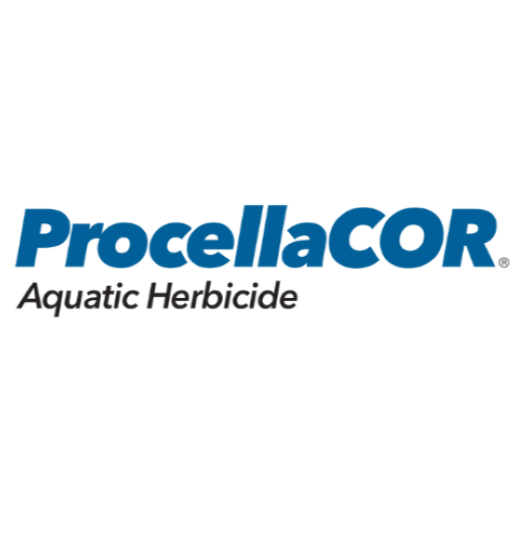
ProcellaCOR Benefits
ProcellaCOR isn’t just another treatment for aquatic weeds.
It does something different. Researchers have described it as having the best features of other technologies combined.
These are the most significant features that make ProcellaCOR unique:
• ProcellaCOR is selective. It won’t hurt the plants that you want in your pond.
• It lasts longer. Forget multiple follow-up visits to keep your water free of Milfoil, Hydrilla, Crested Floating Heart, and others. ProcellaCOR will keep them at bay for much longer than other solutions.
• Reduced Risk. Safety is important to us. To you. To your kids. And our development of ProcellaCOR was no different. Keep enjoying your lake or pond for swimming, fishing, boating, and all the other things you enjoy and love about it.
• It reduces your chemical usage through longer control and less product required for treatment. (Fewer chemicals also means cost savings, an added bonus).
How does ProcellaCOR provide these benefits?
ProcellaCOR specifically targets a hormone mechanism that is unique to plants. Only certain plants will respond to this targeting. ProcellaCOR will move to the root of these plants, preventing them from growing back.
Why ProcellaCOR?
Every water body has at least one nuisance weed that keeps coming back year after year. And that means applying chemicals to control it year after year.
Not with ProcellaCOR. This unique formula requires 40x-100x less active ingredient and achieves significantly longer control.
With a Reduced Risk classification from the EPA, it is designed to reduce risk To Our Health, Nontarget Plants, And Our Water Supply.
Even the EPA says ProcellaCOR is “practically non-toxic” to animals and humans.
Once a specialist applies ProcellaCOR near the weeds you’ve been dealing with, say goodbye! Those weeds won’t be around much longer to clog your boat propeller, spoil your view, make it unpleasant to swim or fish, etc…
REGEN-Enhancer®
REGEN-Enhancer®
Improve the effectiveness of algaecides and herbicides
REGEN-Enhancer® is a natural catalyst that accelerates chemical treatments by improving penetration. When mixed with an algaecide or herbicide it speeds the breakdown of dead algae and aquatic plants while stimulating naturally occurring bacteria to fixate nutrients liberated during this process. This complex blend of enzymes, cultures, fungi, and stimulants dissolves the dead algae and aquatic plants on a cellular level, reducing their contribution of nutrients.
By accelerating chemical reactions, REGEN-Enhancer® improves copper algaecide performance. This is especially critical in hard water applications when copper solubility and performance is reduced.
REGEN-Enhancer® alone does not kill anything.
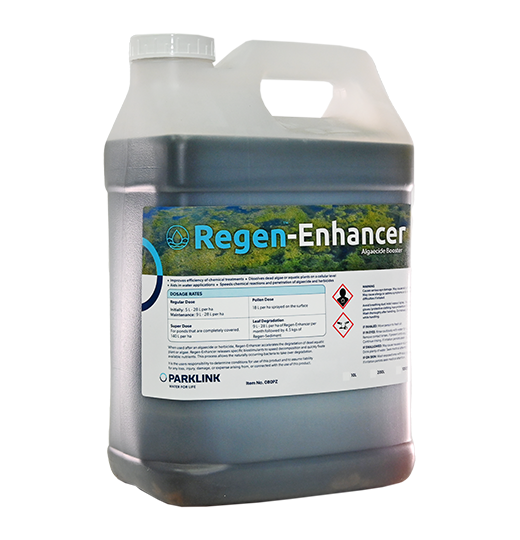
The science behind it
The cells of algae and aquatic plants can be thought of as a series of well-engineered structures. These structures are made of complex proteins, carbohydrates, lipids, and minerals. Chlorophyll is stored within the chloroplasts in the cell, and chlorophyll is how a plant gets it energy to grow from sunlight. This intricate framework allows algae and aquatic plants to grow and thrive while aiding in resistance to chemical treatments.
Improving the performance of contact algaecides and aquatic herbicides
Contact algaecides (copper products, peroxides, and herbicides) must contact the cell wall and enter the cell to be effective. The lack of penetration and intercellular movement of these chemistries reduces their effectiveness. REGEN-Enhancer® degrades dead plant cell walls and weakens cellular integrity when used with an algaecide formulation. Killing all susceptible cells reduces the risk of algae developing any resistance to chemical treatments.
Improving the performance of systemic herbicides
Systemic herbicides (i.e. glyphosate, imazapyr, or triclopyr) travel through the cell disrupting processes such as amino acid synthesis, cell division, and photosynthesis. Systemic herbicides tend to work slower, but they do translocate into multiple parts of the plant. However, herbicide resistance has been studied in detail and can reduce overall treatment performance and consistency. For this reason, we focus on a complete degradation of the dead plant structure and aquatic herbicide dispersion to all susceptible cells.
When combined with systemic herbicides, REGEN-Enhancer® speeds movement into the cells by breaking down the cellular framework of dead cells, promoting rapid nutrient recovery, and decomposing dead plant material from the inside out. REGEN-Enhancer® works synergistically with systemic herbicides and ensures thorough and complete degradation of dead aquatic plants.
NOTE: REGEN-Enhancer® DOES NOT kill aquatic plants or algae.
Specifications
Common Uses
- Lakes and ponds
- Aquaculture
- Hatcheries
- Water features
- Golf courses
- Retention ponds
- Decorative Ponds
- And more!
Benefits
- Used as an adjuvant
- Speeds chemical reactions
- Cleans up dead plant matter
- Rainfast via improved absorption
- Less chemical use
- Safe for environment and applicator
Available sizes
- 9.4-litre jug
- 208-litre drum
- 1040-litre tote
Dosage
When mixed with algaecide or herbicide:
*Do not mix directly with peroxide-based algaecides.
| Surface Acres | Filamentous Algae | Planktonic Algae* | Aquatic Plants* |
| 1/4 | 0.47 – 2.8 litres | 0.47 – 0.95 litres | 0.47 – 1.9 litres |
| 1/2 | 0.95 – 5.7 litres | 0.95 – 1.9 litres | 0.95 – 3.8 litres |
| 1 | 1.9 – 11.3 litres | 1.9 – 3.8 litres | 1.9 – 7.6 litres |
| 5 | 9.5 – 57 litres | 9.5 – 19 litres | 9.5 – 38 litres |
| 10 | 19 – 114 litres | 19 – 38 litres | 19 – 76 litres |
| 100 | 189 – 1135 litres | 76 – 379 litres | 189 – 757 litres |
Applications
Commonly treated algae and plants:
Filamentous Algae
- Pithophora
- Cladophora
- Spirogyra
- Hydrodictyon
Planktonic Algae
- Aphanizomenon
- Chlamydomonas
Aquatic Plants
- Hydrilla
- Hygrophila
- Torpedograss
- Alligator weed
- Duckweed
- Salvinia
- Other plants
Downloads
Clipper Herbicide®
Clipper Herbicide®
Clipper Herbicide ® generally is a fast-acting contact herbicide that controls selected floating, emergent and submerged aquatic weeds and algae. It is most effective when applied to young, actively growing weeds in water with pH less than 8.0.
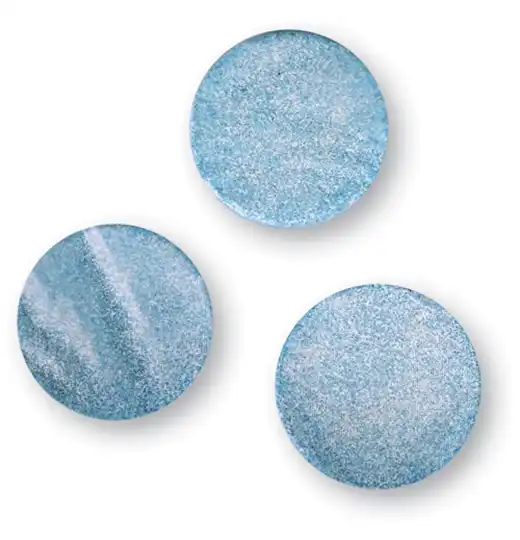
Weeds controlled
- Amazon Frogbit
- Azolla Duckweed
- Salvinia
- Blue Water Lily
- Blunt Pondweed
- Cabomba
- Floating Filamentous Algae
- Hornwort
- Mexican Water Lily
- Slender Knot or Smartweed
- Water Stargrass
- Yellow Water Poppy
- Leafy Elodea
- Sagittaria
- Alligator Weed
Clipper Herbicide: Effervescent Aquatic Weed Control
Tune in the below videos and discover the ins and outs of using Clipper Herbicide – the Aquatic Weed Control in a tablet.
What’s in it? Clear explanations about the three methods of application and the best practices of applying Clipper with ultimate technologies such as drone.
Results
Elodea and Mexican water lily, Valentine NSW. Treatment by Midway.
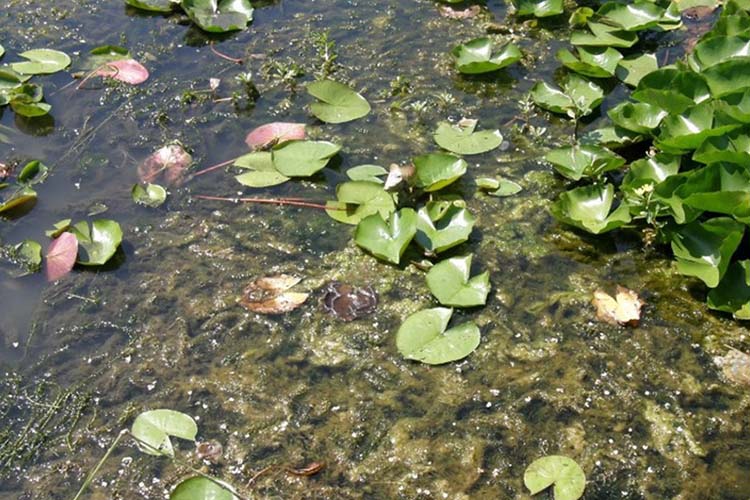

Before and after
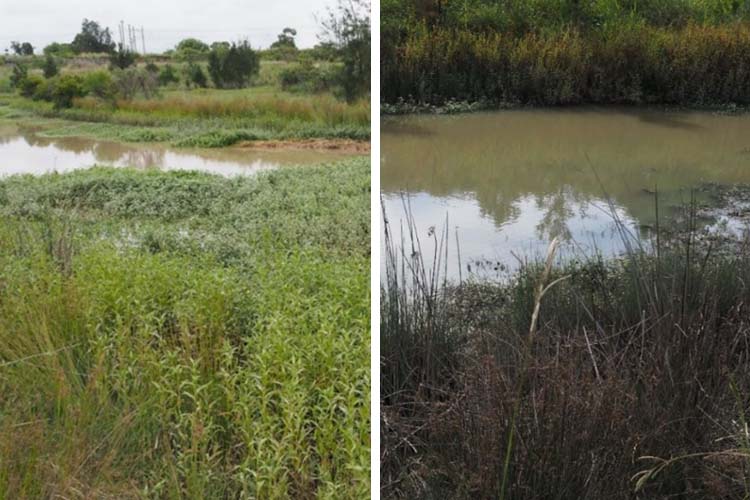
Alligator weed . Cardiff NSW
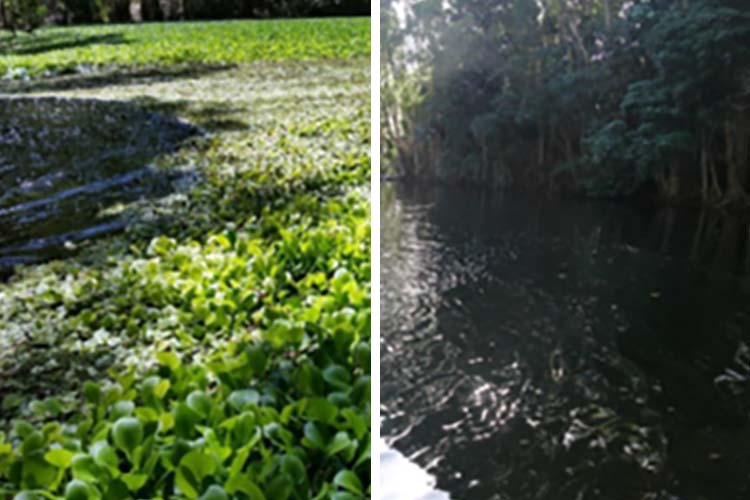
Amazon frogbit. Cairns QLD
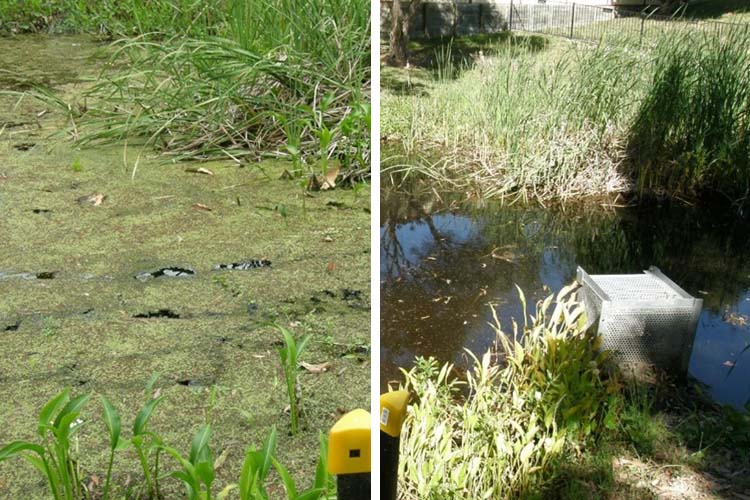
Azolla, sagittaria, duckweed algae. Belmont NSW

Cabomba. Forster NSW
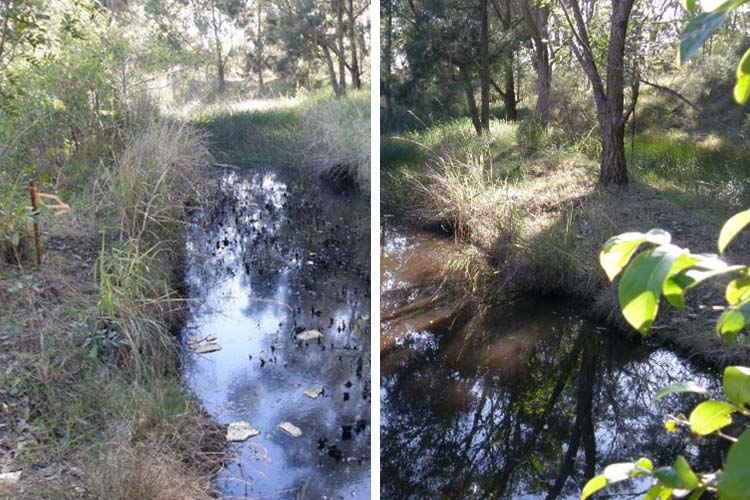
Sagittaria and Duckweed. Wadalba NSW
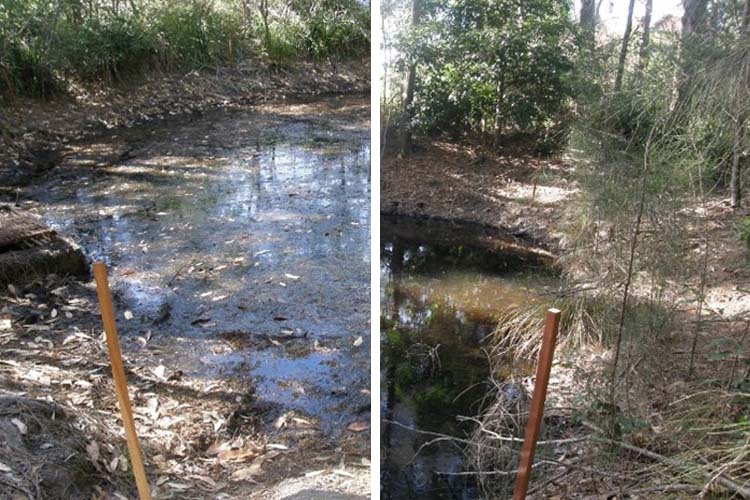
Water Stargrass. Bonnells bay NSW
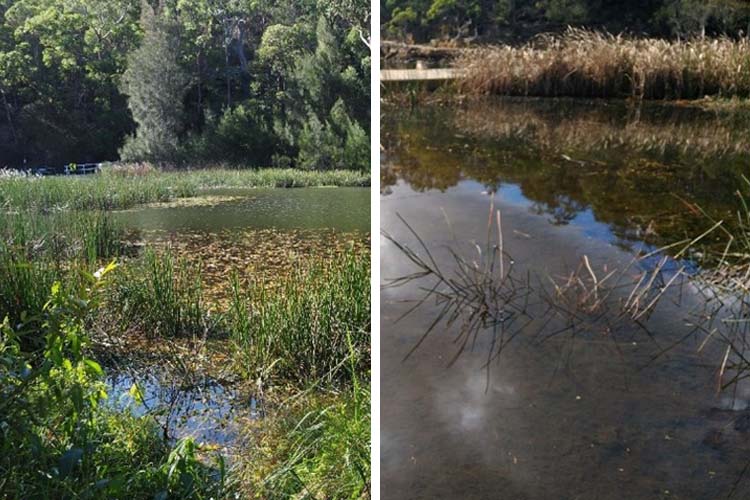
Yellow water poppy. S Sydney
Accreditation Training
Clipper Herbicide® must only be used by an accredited operator. In order to gain accreditation, candidates are required to watch training material and complete assessment questions as part of the accreditation process. A certificate is provided upon successful completion of the training.
Updated Stewardship
Stay ahead in aquatic weed management with the latest Herbicide Stewardship update.
From identifying weeds to correct dosing and safe application, our comprehensive guide ensures effective treatment with CLIPPER Herbicide®.
Rate Calculator
Click Here for the Clipper Herbicide rate calculator.



